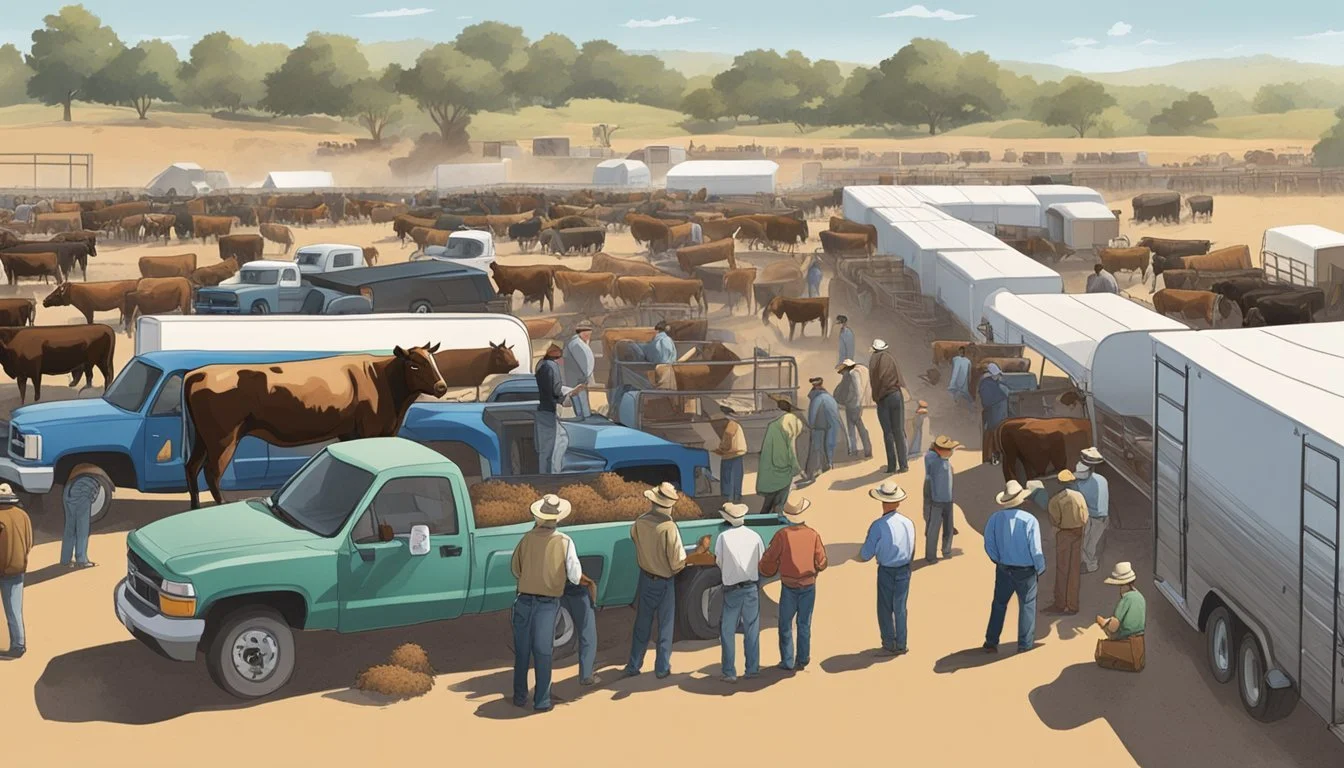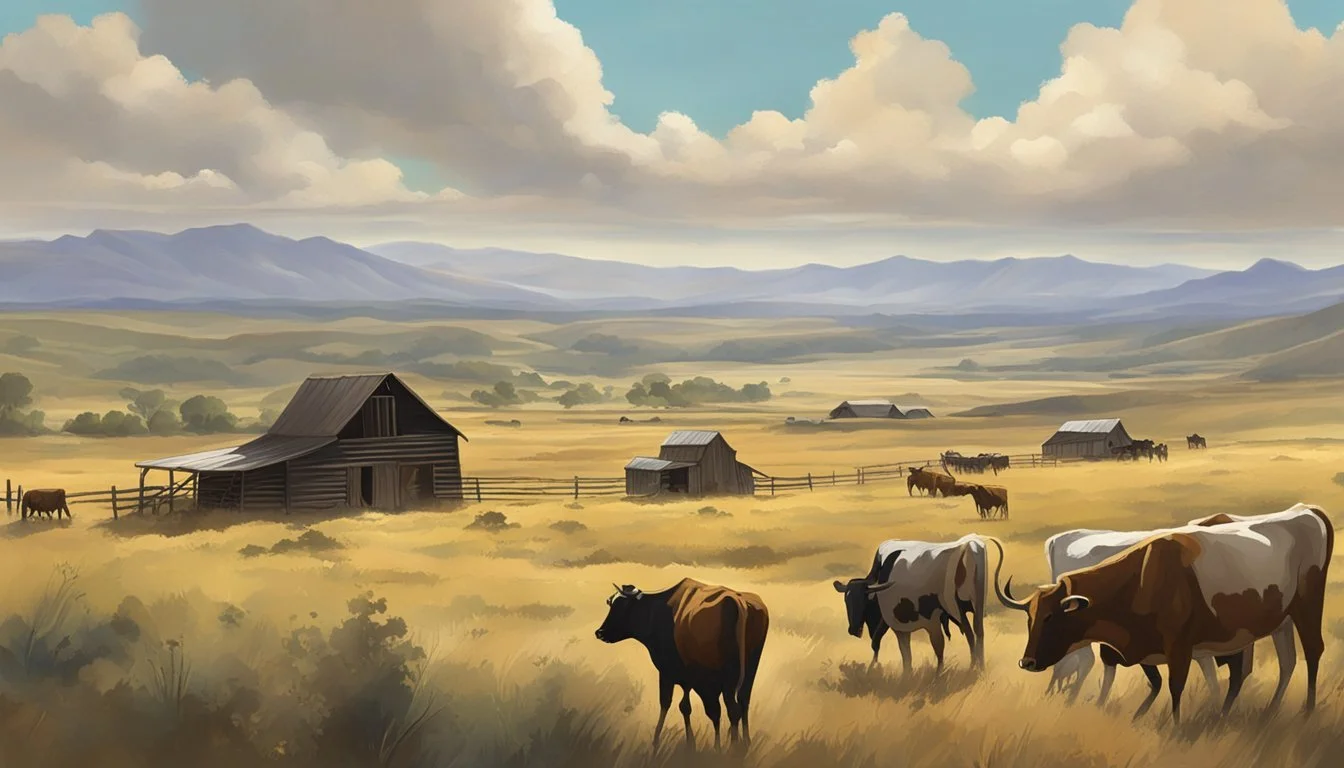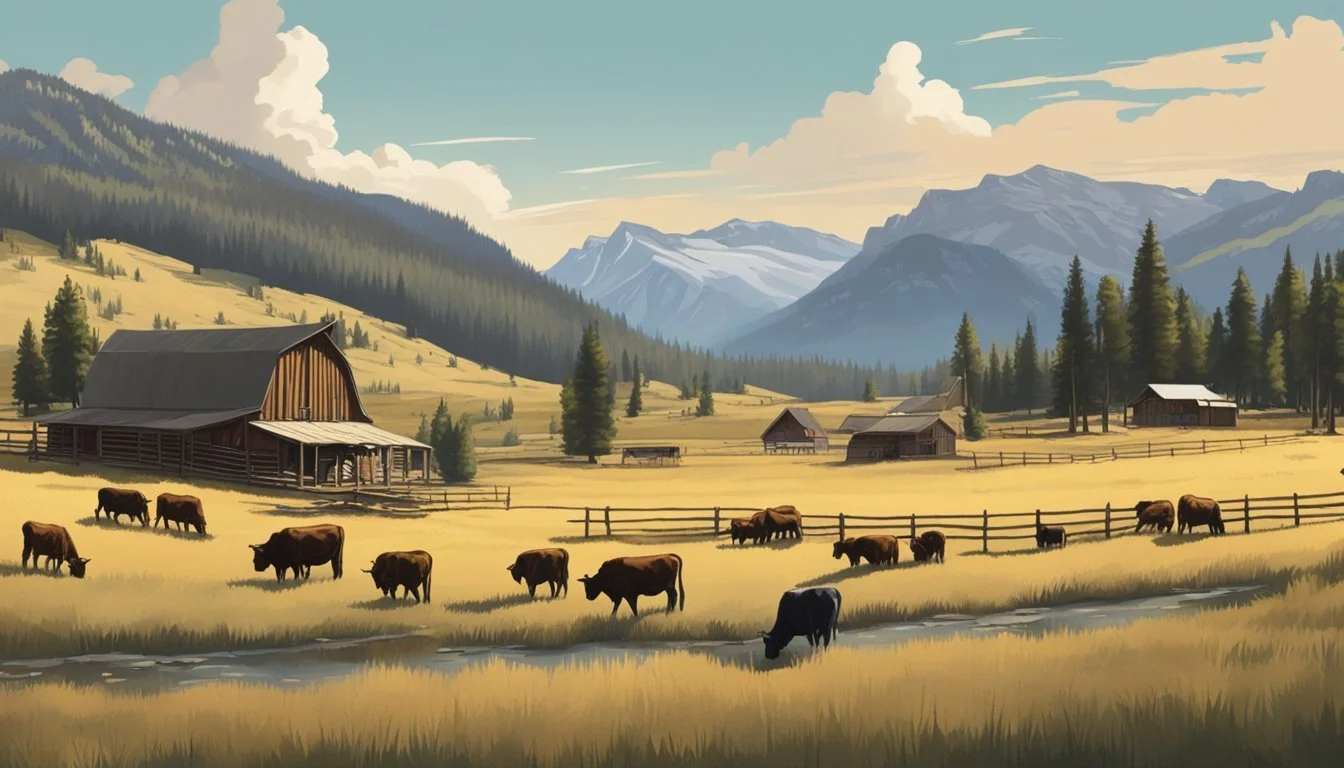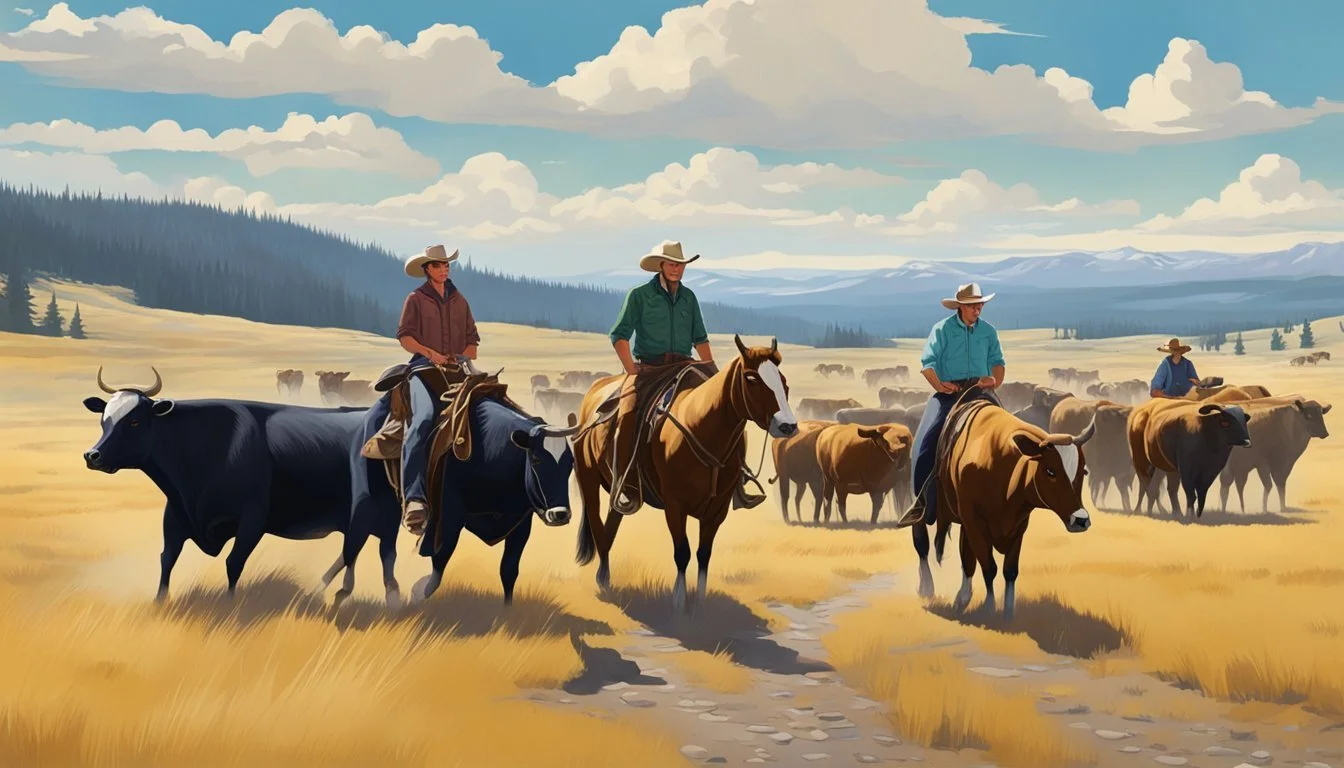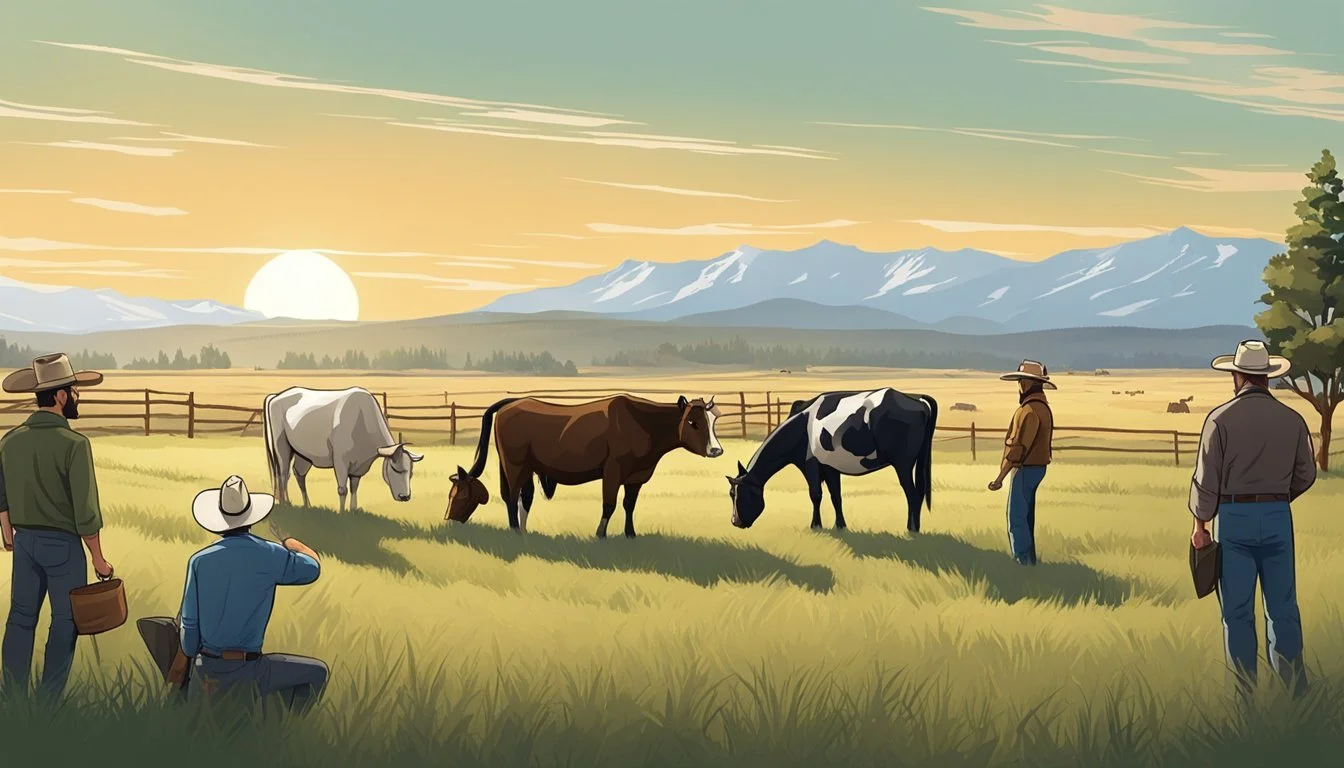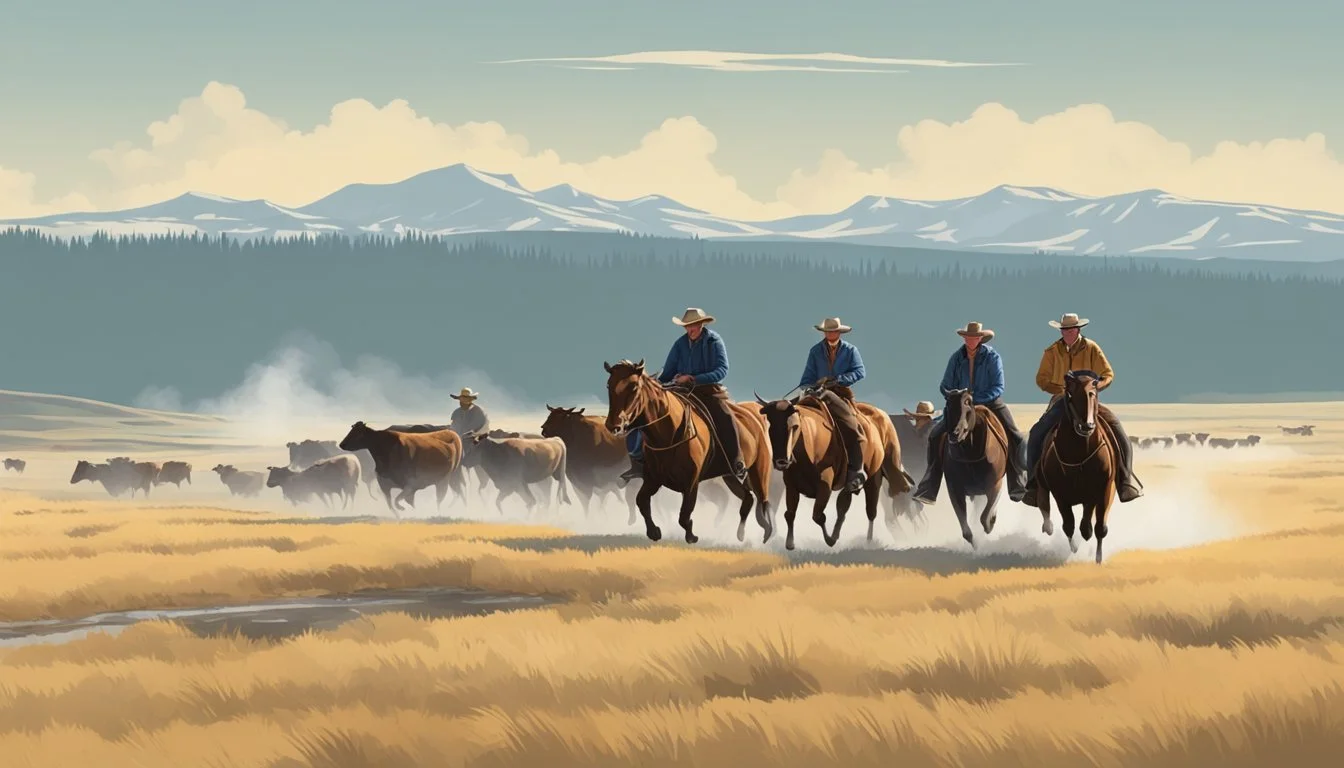7 Ways Yellowstone Accurately Portrays Modern Ranching
A Reality Check on TV's Western Drama
Yellowstone, the popular television series created by Taylor Sheridan, has captivated audiences with its dramatic portrayal of modern ranching life in Montana. While the show incorporates fictional elements for entertainment purposes, it also draws from authentic aspects of contemporary ranch operations.
The series sheds light on genuine challenges faced by ranchers today, including economic pressures, land use conflicts, and the struggle to maintain family-owned properties. By blending factual details with compelling storytelling, Yellowstone offers viewers a glimpse into the complexities of running a large-scale ranch in the 21st century. This article examines seven ways in which the show accurately depicts various facets of modern ranching.
1) Cattle Auctions and Sales
Yellowstone accurately depicts the importance of cattle auctions and sales in modern ranching. The show portrays these events as crucial for ranchers to generate income and manage their herds.
In the series, characters like John Dutton and Rip Wheeler are often seen preparing cattle for sale or attending auctions. This reflects the real-world practice of ranchers carefully selecting and grooming their livestock for these events.
The show also captures the strategic decisions ranchers must make regarding when and where to sell their cattle. Factors such as market prices, cattle conditions, and transportation costs all play a role in these choices.
Yellowstone showcases the competitive nature of cattle auctions, with ranchers vying for the best prices. This accurately represents the high-stakes atmosphere often found at real livestock sales.
The series occasionally touches on the financial impact of cattle sales on ranch operations. This reflects the reality that successful sales are vital for maintaining a ranch's profitability and sustainability.
2) Gritty Reality of Ranch Life
Yellowstone pulls no punches in depicting the harsh realities of modern ranching. The show portrays the physical demands of the job, from long hours in the saddle to grueling cattle drives.
Dangerous situations are commonplace, with ranchers facing threats from wildlife, unpredictable weather, and equipment accidents. The series showcases the ever-present risk of injury or even death that comes with the territory.
Financial struggles are another authentic aspect highlighted in Yellowstone. Ranchers often operate on thin margins, battling market fluctuations and rising costs of land and equipment.
The show also addresses the emotional toll of ranch life. Characters grapple with isolation, family conflicts, and the pressure to maintain a multi-generational legacy.
Environmental challenges play a significant role, mirroring real-world issues. Drought, wildfires, and conflicts over land and water rights are recurring themes that resonate with actual ranchers.
Yellowstone doesn't shy away from the less glamorous aspects of animal husbandry. It depicts the realities of veterinary care, breeding, and the difficult decisions ranchers sometimes face regarding their livestock.
3) Legacy Land Ownership Issues
Yellowstone accurately portrays the complexities of legacy land ownership in modern ranching. The show highlights how ranches often remain in families for generations, passing from parent to child.
This multi-generational ownership creates deep emotional ties to the land. Ranchers view their property not just as a business asset, but as a cherished family legacy they must protect and preserve.
The series also depicts the challenges of maintaining large tracts of land in today's economic climate. Rising property taxes, development pressures, and changing agricultural markets all threaten long-held family ranches.
Yellowstone reflects the tension between tradition and progress. Ranchers must balance preserving their heritage with adapting to modern realities to keep their operations viable.
The show illustrates how legacy land issues can create conflict within families. Differing views on how to manage or potentially sell inherited property often lead to disagreements between family members.
By exploring these nuanced legacy land ownership dynamics, Yellowstone offers viewers insight into a key aspect of contemporary ranching culture. The series authentically captures the pride, responsibility and challenges associated with inherited ranch lands.
4) Importance of Family Bonds
Yellowstone accurately depicts the crucial role of family bonds in modern ranching operations. The Dutton family's tight-knit relationships serve as the foundation for their ranch's success and longevity.
Family members work together, sharing responsibilities and knowledge passed down through generations. This collaborative approach is essential for managing large-scale ranching operations effectively.
The show portrays how ranching families often prioritize their legacy and heritage. Children are raised with a deep connection to the land and an understanding of their family's history and traditions.
Yellowstone also illustrates how family bonds can be tested by external pressures and internal conflicts. These challenges reflect the real-world difficulties faced by ranching families in maintaining unity amid changing times.
The series showcases how family loyalty often extends beyond blood relations to include long-time employees and trusted allies. This expanded sense of family is common in real ranching communities.
By highlighting these strong family ties, Yellowstone captures a key aspect of modern ranching culture that continues to shape the industry today.
5) Conflict with Land Developers
Yellowstone accurately portrays the ongoing struggle between ranchers and land developers in modern Montana. The show depicts wealthy outsiders purchasing large tracts of land, threatening traditional ranching culture.
This conflict mirrors real-world disputes in Montana's Paradise Valley, where ranchers face pressure from developers seeking to transform agricultural land into residential or commercial properties.
The series highlights the economic pressures ranchers experience as land values rise. It shows how some are tempted to sell their property for significant profits, while others fight to maintain their way of life.
Yellowstone also explores the legal and political aspects of these conflicts. The show demonstrates how ranchers navigate zoning laws, property rights, and local government decisions to protect their interests.
The series accurately represents the emotional toll these battles take on ranching families. It portrays the stress and uncertainty they face as they try to preserve their heritage and livelihood against powerful outside forces.
6) Day-to-Day Ranch Operations
Yellowstone provides an authentic glimpse into the daily routines of modern ranching. The show depicts various essential tasks that keep a large cattle operation running smoothly.
Branding cattle is accurately portrayed as a crucial activity for identifying ownership. Scenes of cowboys roping and restraining calves for branding reflect real practices used on working ranches today.
Range management is another key aspect showcased in the series. Characters are often seen monitoring grass conditions and moving herds to different pastures to prevent overgrazing.
The show also highlights the importance of maintaining fences and other infrastructure. Ranch hands are frequently depicted repairing broken fences or clearing trails, tasks vital to containing livestock and accessing remote areas of the property.
Veterinary care is realistically presented as an ongoing concern. Characters deal with injured animals and oversee herd health, demonstrating the constant vigilance required in livestock management.
Equipment maintenance is another accurately portrayed daily task. Scenes of workers servicing trucks, tractors, and other machinery underscore the mechanical skills needed on a modern ranch.
7) Use of Modern Technology
Yellowstone accurately portrays the integration of modern technology in ranching operations. The show depicts ranchers utilizing GPS tracking devices to monitor livestock movements across vast territories.
Drones are shown being employed for aerial surveillance of cattle herds and property boundaries. This reflects the real-world adoption of drone technology by many large ranches to improve efficiency.
The series also showcases the use of advanced veterinary equipment and techniques. Modern medical tools are depicted for diagnosing and treating livestock ailments, mirroring actual practices on contemporary ranches.
Computer systems and software appear frequently for managing ranch finances, inventory, and breeding records. This aligns with the increasing digitization of ranch management in reality.
Communication technology plays a prominent role, with characters using smartphones and tablets to stay connected across expansive ranch lands. This mirrors the essential nature of mobile devices in coordinating modern ranch operations.
The show also touches on precision agriculture techniques, such as soil sensors and satellite imaging. These technologies are gaining traction in real-world ranching to optimize land use and crop yields for livestock feed.
Authenticity in Ranching Practices
Yellowstone depicts many authentic aspects of modern ranching, from traditional techniques to contemporary challenges. The show balances realism with dramatic storytelling to give viewers insight into ranch life.
Traditional Cattle Herding Techniques
Yellowstone showcases time-honored cattle herding methods still used today. Riders on horseback guide cattle across vast pastures, demonstrating skills passed down through generations. The series accurately portrays branding practices, with cowboys using hot irons to mark livestock ownership.
Cattle drives feature prominently, highlighting the coordination required to move large herds. These scenes capture the physical demands and teamwork essential in ranching operations. The show also depicts seasonal tasks like calving, illustrating the year-round nature of ranch work.
Rope skills play a key role, with characters expertly lassoing cattle. This reflects the continued importance of roping in modern ranching, especially for medical treatments and sorting herds.
Challenges of Modern Ranching
Yellowstone addresses real economic pressures facing ranchers today. Land disputes and development threats mirror actual conflicts between ranchers and expanding urban areas. The show highlights the struggle to maintain large family-owned ranches amid rising costs and changing land use.
Environmental concerns feature prominently, reflecting genuine issues like drought and wildlife management. Characters grapple with balancing traditional practices and conservation efforts, mirroring real-world debates.
The series portrays the integration of technology in ranch operations. GPS tracking for cattle and modern veterinary practices showcase how ranching has evolved. Financial pressures and market fluctuations depicted in the show echo actual challenges in the beef industry.
Yellowstone also touches on succession planning and generational conflicts, common issues for family-run ranches today.
Cultural Representation of Ranchers
Yellowstone offers a nuanced portrayal of modern ranchers, capturing both the traditions and challenges they face. The show delves into the complex dynamics of ranching families and explores the enduring cowboy ethics that shape their way of life.
Dynamics of Ranching Families
Yellowstone depicts the intricate relationships within ranching families, showcasing their deep connection to the land. The Dutton family's struggles to preserve their legacy resonate with real ranchers fighting to maintain their way of life.
The show highlights the generational aspects of ranch ownership, portraying the pressure on younger family members to continue the tradition. This accurately reflects the dilemmas many ranching families face today.
Yellowstone also captures the daily challenges of running a large-scale ranch, from managing finances to dealing with environmental regulations. These elements provide viewers with a realistic glimpse into the complexities of modern ranching operations.
Portrayal of Cowboy Ethics
The series authentically represents the cowboy code of ethics that still guides many ranchers today. Characters embody values like hard work, loyalty, and respect for the land.
Yellowstone's depiction of ranch hands offers insight into the cowboy lifestyle. Bunkhouse scenes showcase the camaraderie and hardships these workers experience, reflecting the tight-knit communities found on real ranches.
The show emphasizes the importance of horsemanship in ranch culture. Horses are portrayed not just as tools, but as symbols of freedom and the untamed spirit of the West.
Yellowstone also explores the conflicts between traditional ranching values and modern pressures, illustrating the ethical dilemmas ranchers face in preserving their way of life while adapting to change.


